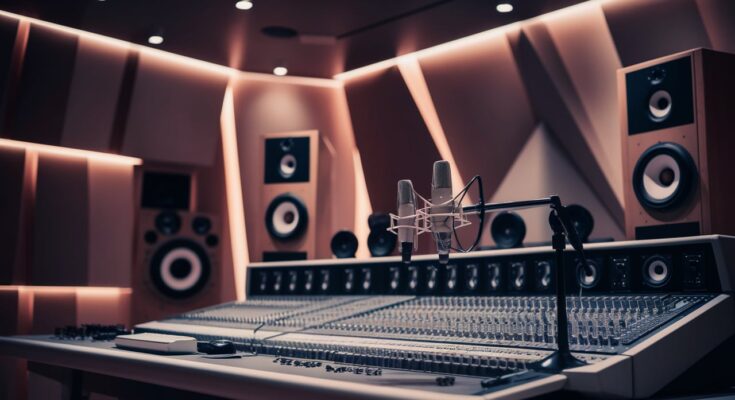Optimized Sound Quality: Sound quality is paramount when it comes to enjoying music, movies, podcasts, and gaming experiences. Whether you’re a casual listener or an audiophile, understanding how to optimize sound quality can significantly enhance your enjoyment and appreciation of audio content. This guide explores the key factors that influence sound quality, practical tips for improving audio fidelity across different devices, recommended settings, and personal anecdotes to illustrate the impact of optimized sound in everyday life.
Understanding Sound Quality: Factors and Considerations
Achieving optimal sound quality involves a combination of hardware, software settings, and environmental factors. Here are key elements to consider:

1. Source Material and Format
- Lossless vs. Lossy Audio: Lossless formats like FLAC or WAV preserve the original audio quality, while lossy formats like MP3 or AAC sacrifice some fidelity for smaller file sizes. Choose high-resolution formats for the best audio experience.
- Streaming Quality: Streaming services offer varying levels of audio quality. Opt for platforms that support high-bitrate streaming for superior sound reproduction.
2. Playback Devices
- Headphones and Speakers: Quality headphones or speakers with accurate frequency response and driver performance reproduce sound faithfully. Consider factors like driver size, impedance, and sensitivity when choosing audio equipment.
- Digital-to-Analog Conversion (DAC): A high-quality DAC ensures accurate conversion of digital audio signals to analog, minimizing distortion and preserving detail.
3. Room Acoustics
- Reflections and Absorption: Room layout, furnishings, and acoustic treatments impact sound quality. Minimize hard surfaces that cause reflections and use rugs, curtains, or acoustic panels to absorb excessive reverberations.
- Speaker Placement: Position speakers correctly to optimize stereo imaging and reduce interference from walls or furniture.
Practical Tips to Optimize Sound Quality
1. Use High-Quality Audio Sources
- Lossless Formats: When possible, choose FLAC, ALAC, or WAV files for music playback to retain maximum audio fidelity.
- High-Bitrate Streaming: Select streaming services that offer high-bitrate options (e.g., Spotify Premium, Tidal HiFi) for better sound quality.
2. Calibrate Audio Equipment
- Headphone Calibration: Use headphone calibration software or apps to tailor sound profiles to your preferences and compensate for any frequency response irregularities.
- Speaker Setup: Follow manufacturer guidelines for speaker placement and calibration. Use room correction software or manual adjustments to optimize sound output based on room acoustics.
3. Adjust Equalizer Settings
- Balance Frequencies: Experiment with equalizer settings to adjust bass, midrange, and treble frequencies according to your listening environment and preferences.
- Presets and Customization: Many audio devices and apps offer preset EQ profiles or allow users to create custom EQ curves tailored to different genres or playback scenarios.
4. Enhance Soundstage and Imaging
- Virtual Surround Sound: Enable virtual surround sound technologies for immersive gaming or movie experiences, enhancing spatial awareness and directional audio cues.
- Crossfeed and Stereo Imaging: Adjust crossfeed settings to simulate natural speaker listening conditions and optimize stereo imaging for headphones.
Personal Anecdote: My Journey to Audio Enlightenment
Growing up in a household where music was always playing, I developed a deep appreciation for sound quality from an early age. One memorable experience was upgrading to a pair of high-fidelity headphones and discovering nuances in my favorite albums that I had never noticed before. The clarity of instruments, richness of vocals, and depth of soundstage transformed my listening sessions into immersive journeys through music history.
Recommended Settings and Tools for Optimal Sound Quality
1. Audio Player Software
- Foobar2000 (Windows): Supports various audio formats and plugins for enhanced playback customization.
- Audirvana (Mac): Optimizes audio playback for audiophile-grade sound quality with support for high-resolution formats.
2. Hardware Recommendations
- Headphones: Sennheiser HD800S, Audeze LCD-X, or Beyerdynamic DT 1990 Pro for audiophile-grade sound reproduction.
- Speakers: KEF LS50 Wireless II, Sonos Five, or Klipsch RP-8000F for high-fidelity audio in home theater or stereo setups.
3. Room Correction Software
- Dirac Live: Corrects room acoustics and speaker response to achieve a more balanced sound profile.
- Room EQ Wizard: Analyzes room acoustics and assists in optimizing speaker placement and EQ settings.

Conclusion: Elevate Your Audio Experience with Optimized Sound Quality
Optimizing sound quality is not just about technical specifications—it’s about unlocking the full potential of your audio equipment to deliver immersive, true-to-life listening experiences. By understanding the factors that influence sound fidelity, implementing practical tips for calibration and adjustment, and exploring high-quality audio sources, you can elevate your enjoyment of music, movies, and games to new heights.
Whether you’re fine-tuning your headphones for a studio-quality music session or optimizing your home theater for cinematic immersion, the pursuit of optimized sound quality is a journey of discovery and appreciation. Embrace the nuances, experiment with settings, and immerse yourself in the rich tapestry of audio experiences that await. Discover how optimized sound quality can transform ordinary moments into extraordinary encounters with the power of music and sound.

